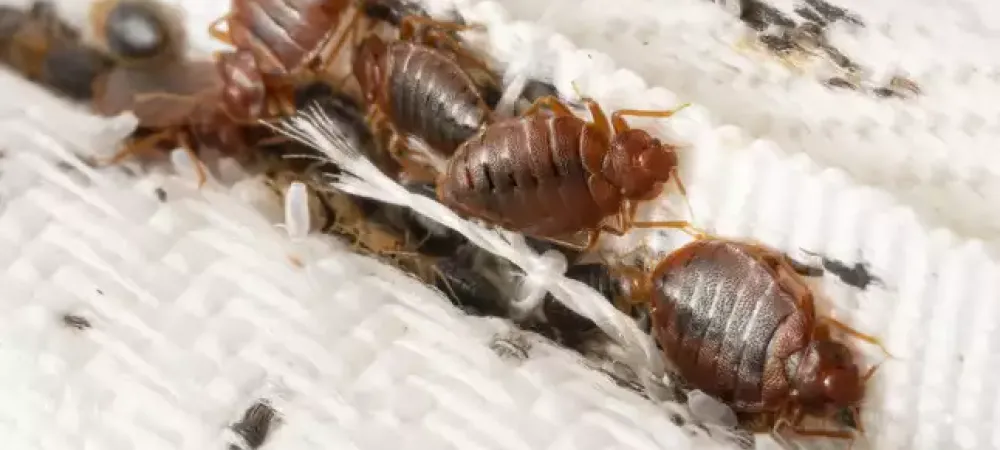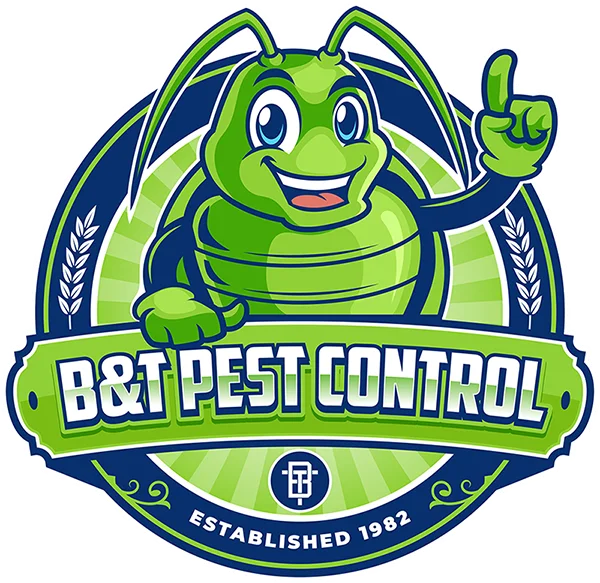How to Check For Bed Bugs

Finding a few mysterious bites—or a tiny brown bug scurrying across the sheets—can ruin anyone’s sleep. Bed bugs aren’t a sign of dirtiness, and they don’t spread disease, but they do reproduce quickly and are fiendishly good at hiding. A single pregnant female can turn into an infestation of thousands within a few months, so early detection is everything. This guide walks North Carolina homeowners through exactly why our state is at higher risk, what to look for, and how to line up a professional inspection before the problem balloons.
Why Bed Bugs Are a Problem in North Carolina
Bed bugs thrive in moderate climates, which makes much of North Carolina an ideal breeding ground—especially during the spring and fall when humidity levels are higher. Urban areas like Raleigh, Greensboro, and Wilmington tend to have more frequent reports due to travel and high-density housing, but no area is immune.
- Mild, humid climate—Eggs hatch fastest at 70 – 90 °F with 60 %+ humidity—prime conditions from March through November in most of NC.
- Tourism & short-term rentals—The Outer Banks, Asheville, Charlotte, Raleigh, and Surf City hotels/Airbnb’s see constant guest turnover (and luggage traffic).
- College Towns—Chapel Hill, Boone, Greenville, Wilmington, Durham, Raleigh, and Greensboro experience two mass student move-outs a year—prime time for bugs to ride furniture home.
- Military Transfers—Bases like Fort Liberty (Bragg) and Camp Lejeune bring frequent in-state moves and furniture swaps.
- Older Housing Stock—Many NC homes (especially pre-1960 mill houses and coastal cottages) have abundant cracks inside wood framing that make perfect harborage.
Early Signs of Bed Bugs
Even in the early stages, bed bugs leave behind subtle clues—if you know where (and how) to look. Catching these signs early can make the difference between a quick fix and a full-blown infestation. Here's what to watch for around your bed, furniture, and baseboards before the problem spreads.
Physical Signs of Bed Bugs
Reddish or Rust-Colored Stains
These stains are usually left behind when a bed bug is accidentally crushed after feeding. They might look like:
- Small smears or blotches on light-colored sheets or pillowcases
- Tiny dots or smudges that may seem like dried blood
Where to look:
- Mattress seams and creases
- Pillow covers and sheets
- Pajamas or nightwear
Tiny Dark Spots (Fecal Matter)
Bed bug droppings appear as dark brown or black spots, roughly the size of a pen tip. These are digested blood and may soak into fabric.
Where to look:
- Mattress edges and tufts
- Folds in box springs or bed skirts
- Corners of baseboards or behind headboards
Tip: Rub the spot with a moist paper towel — if it smears, it’s likely bed bug feces
Shed Skins or Exoskeletons
Bed bugs molt (shed their outer skin) several times as they grow. These are pale yellow, translucent, and shaped like a bed bug.
Where to look:
- Seams of mattresses
- Under couch cushions
- Inside cracks in wood furniture
Bed Bug Eggs and Eggshells
Eggs are very tiny, about the size of a pinhead (1mm), white, and sticky. They are often laid in tight spaces.
Where to look:
- Along mattress piping
- Inside screw holes of bed frames
- Under loose wallpaper or behind wall hangings
Live Bed Bugs
Adult bed bugs are about the size of an apple seed (4–7mm), flat, oval, and reddish-brown. After feeding, they appear more bloated and red.
Where to look:
- During night hours with a flashlight
- Behind picture frames, outlets, or baseboards
- Inside furniture joints or drawer corners
Pro Tip: Use a credit card to gently scrape mattress seams to expose hiding bugs.
Bites and Bodily Reactions
Clusters or Rows of Bites
Bed bug bites often appear in:
- Lines or zigzag patterns
- Clusters of 3–5 bites (“breakfast, lunch, and dinner” pattern)
Common bite areas:
- Arms, legs, neck, back, face — any exposed skin during sleep
Redness, Swelling, and Itchiness
Not everyone reacts the same. Some people may:
- Have no reaction
- Experience mild itching
- Develop red, inflamed welts
Important: Bites alone are not proof of bed bugs. They resemble mosquito or flea bites.
Environmental and Sensory Clues
Musty or Sweet Odor
A strong, unpleasant, sweet smell may come from the bug’s scent glands.
- Most noticeable in heavy infestations
- Described as “musty” or like overripe raspberries
Where it’s strongest:
- Bedrooms or areas where people sleep
- Along floorboards or inside wall cavities
Hiding in Small Crevices
Bed bugs are extremely good at hiding. They prefer dark, tight spaces close to where humans sleep or rest.
Check:
- Mattress seams and under tags
- Box spring edges and inside fabric cover
- Behind baseboards, electrical outlets, and light switch plates
- Under peeling paint or wallpaper
- In the seams of upholstered furniture
What to Do if You Find Signs of Bed Bugs
1. Confirm
Don’t panic. Capture what you find in a plastic bag or on clear tape and compare it to photos of bed bugs online. Some bugs—like carpet beetles or bat bugs—can look similar.
2. Report Multi-Unit Housing Issues
If you live in a condo or apartment, notify your HOA or landlord immediately to prevent the spread.
3. Don’t Use DIY Bombs or Foggers
These often make things worse. Bed bugs hide deeper in walls and furniture when disturbed by over-the-counter sprays or foggers.
4. Call a Licensed Pest Professional—B&T Pest Control
If you’ve found signs of bed bugs—or even just suspect them—your next step should be to bring in a licensed, experienced professional. Bed bugs are incredibly hard to eliminate without expert tools, and DIY treatments often just cause them to scatter and dig in deeper.
At B&T Pest Control, we’ve been serving North Carolina homeowners since 1982, and bed bugs are one of our specialties. Our team understands how to identify, treat, and monitor infestations—whether it’s a one-bedroom apartment in Wilmington or a historic home in New Bern.
Why homeowners trust B&T Pest Control for bed bug treatments:
- Experienced Bed Bug Experts: We’ve performed thousands of bed bug treatments across southeastern North Carolina. We know the local housing stock, climate, and common infestation patterns—whether it’s a coastal rental, college dorm, or military housing near Camp Lejeune.
- Discreet, Proven Treatments: We use cutting-edge heat and chemical treatment combinations to kill bed bugs at all life stages. Our heat remediation systems raise the temperature of your home to a level that’s lethal to bed bugs, eggs, and nymphs—without damaging your belongings.
- Transparent, Upfront Pricing: No hidden fees, no scare tactics. We’ll walk you through the treatment plan, help you prep, and clearly explain your options—so you can make an informed decision.
- Follow-Up and Monitoring: After the initial treatment, we stay with you. Our plans include monitoring and optional follow-up inspections to ensure your home stays bed bug-free for the long term.
- Licensed and Locally Owned: B&T is fully licensed by the NC Department of Agriculture and locally operated—we’re not a chain or out-of-state franchise. When you call us, you speak with a team that lives and works in your community.
If you suspect bed bugs, don’t wait. Early intervention saves time, money, and stress. Contact our team of experienced bed bug exterminators today to get started!
FAQ: Bed Bugs
Can You See Bed Bugs With The Naked Eye?
Yes, you can. Adult bed bugs are visible to the naked eye and about the size of an apple seed (4–7 mm long). Even nymphs are visible after feeding, though newly hatched ones can be very hard to spot due to their small size and pale color.
What you’ll notice:
- Adults: Oval, reddish-brown, wingless, slow-moving
- Nymphs: Tiny, pale yellow or reddish (after feeding)
- Eggs: Barely visible—look for clusters in hidden areas
- Fecal spots and skins: Easier to detect than the bugs themselves
If you suspect an infestation but can’t spot anything, place interceptor traps under bed legs and check them over several nights.
What Do Bed Bug Eggs Look Like?
Bed bug eggs are tiny, white, and about the size of a grain of salt—only 1 mm long. They are slightly pearly and often appear in clusters of 10–50 in hidden areas.
Key features of bed bug eggs:
- Oval-shaped with a slightly pointed tip
- Sticky when freshly laid (helping them adhere to rough surfaces)
- Often found in mattress seams, behind headboards, in wall cracks, or furniture joints
Eggs can be hard to see without a flashlight or magnification, especially on light-colored surfaces like wood or drywall.
What Do Bed Bugs Look Like?
Bed bugs change appearance as they grow, but they’re always oval-shaped, flat (unless recently fed), and wingless.
Egg
- 1 mm (pin-head)
- Pearly white, slightly translucent
- Glued to rough surfaces, often in tight clusters
Nymph (1st–5th instars)
- 1–4 mm
- Translucent to tan before feeding, but bright red after a meal
- Looks like a very flat sesame seed with legs
Adult
- 4–7 mm
- Rusty-brown, apple-seed shaped
- Wingless, oval, extremely flat until fed (then football-shaped)
Where Do Bed Bugs Hide During the Day?
During daylight hours, bed bugs typically stay tucked away in their hiding places, coming out only at night to feed.
Daytime hiding spots often include:
- Inside mattress seams and box springs
- Inside cracks in the bed frame or headboard
- Under furniture or behind wall hangings
- Beneath baseboards and carpeting
- In electronics or clutter near sleeping areas
Because they avoid light and open spaces, you may never see a bed bug during the day unless you’re actively inspecting.
Where Do Bed Bugs Hide?
Bed bugs are masters of stealth. They prefer tight, dark spaces close to where people sleep or rest—typically within 5 to 10 feet of a bed. But over time, they spread to other rooms, hiding in cracks as thin as a credit card.
Common hiding spots in NC homes include:
- Mattress seams, tufts, and tags
- Box springs and inside the wooden frame
- Behind or inside headboards (especially wall-mounted ones)
- Inside furniture joints (nightstands, dressers, couches, recliners)
- Behind baseboards, crown molding, or picture frames
- Inside electrical outlets and switch plates
- Under loose wallpaper, paneling, or carpet edges
- In luggage, backpacks, and laundry piles
North Carolina Tip: In older homes with wood floors or original plaster walls—especially common in cities like Durham, Winston-Salem, or New Bern—bed bugs may hide in floorboard gaps or wall cracks that newer homes don’t have.
